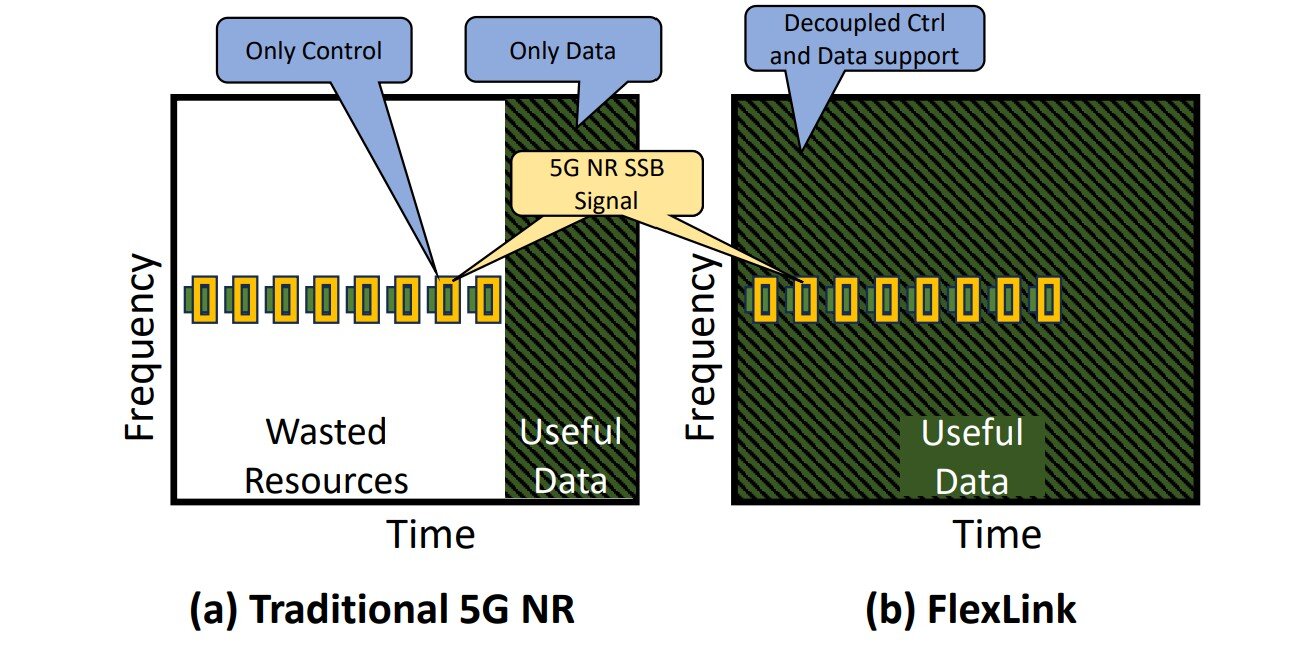
FlexLink designs a novel radio architecture that can decouple control and data signaling through flexible frequency resource distribution of control and data to different directions with narrow pencil beams, much like a flexible configurable prism. Credit: Proceedings of the Twenty-sixth International Symposium on Theory, Algorithmic Foundations, and Protocol Design for Mobile Networks and Mobile Computing (2025). DOI: 10.1145/3704413.3764470
A team from the University of California San Diego and Rensselaer Polytechnic Institute has invented a scalable technology that enables faster and more reliable 5G and 6G wireless communication.
“With our approach, we can support maybe 10 times more devices than before using the same bandwidth,” said Ish Kumar Jain, an assistant professor at Rensselaer Polytechnic Institute and alumnus of the UC San Diego Jacobs School of Engineering. “It also helps reduce latency (the delay in accessing the network) and maintains an extremely high data rate with all connected devices.”
The technique, dubbed FlexLink (patent pending), was co-developed by Dinesh Bharadia, associate professor with the Jacobs School of Engineering and affiliate of the Qualcomm Institute at UC San Diego, along with UC San Diego Ph.D. student Rohith Reddy Vennam.
The paper is published as part of the Proceedings of the Twenty-sixth International Symposium on Theory, Algorithmic Foundations, and Protocol Design for Mobile Networks and Mobile Computing.
“I see a lot of excitement around this work,” noted Jain, who presented the research on October 27 at the ACM MobiHoc 2025 international symposium in Houston. “This is not conventional work where we use a conventional system. We really propose something fundamentally new.”
Splitting beams
The team’s technique caters to 5G and 6G. Compared with 4G, these networks send messages using shorter wavelengths and typically rely on multiple antennas. Potential applications include machine-to-machine communication in virtual reality, industrial Internet of Things and autonomous vehicles.
One of the issues in this area has been a bottleneck in which “control” signals, i.e., messages that configure system parameters like beam direction, bandwidth and other resources, are bundled with other data. That means that control messages often have to wait their turn behind bulky data traffic. This queuing, which is caused by how current antennas form and share beams, slows link setup, handovers and multi-user scheduling.
“FlexLink tackles that bottleneck head-on by decoupling control and data beams in hardware,” said Bharadia, who directs the Center for Wireless Communications and works in UC San Diego’s Department of Electrical and Computer Engineering with an affiliate appointment in the Department of Computer Science and Engineering. “Instead of forcing everything down one direction at a time, FlexLink uses a special front-end called a delay-phased array to send separate, strong beams simultaneously—one dedicated to control, others to data—across the same wideband channel.”
The paper noted that the technique nearly doubles spectrum efficiency.
“Especially in the satellite world, we are not using full bandwidth efficiency,” Vennam said. “FlexLink could reduce waste, with the same limited amount of power.
Setting next-generation 6G standards
The team believes that the work is particularly persuasive because it is based on a simple mathematical equation backed by fundamental theory rather than complex computation.
In addition, team members demonstrated the approach with actual hardware.
“This isn’t just theoretical,” said Vennam. “It’s a feasible system.”
Jain added, “We are hoping FlexLink will be part of next-generation 6G standards. Some companies have already expressed interest.”
More information:
Ish Kumar Jain et al, FlexLink: Decoupling Control and Data Beams for Next-Generation Wideband Networks, Proceedings of the Twenty-sixth International Symposium on Theory, Algorithmic Foundations, and Protocol Design for Mobile Networks and Mobile Computing (2025). DOI: 10.1145/3704413.3764470
Provided by
University of California – San Diego
Citation:
Scalable approach to 6G wireless offers speed and reliability (2025, October 29)
retrieved 30 October 2025
from https://techxplore.com/news/2025-10-scalable-approach-6g-wireless-reliability.html
This document is subject to copyright. Apart from any fair dealing for the purpose of private study or research, no
part may be reproduced without the written permission. The content is provided for information purposes only.

